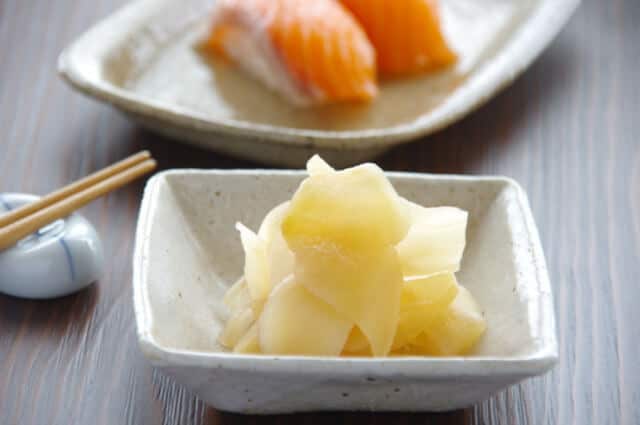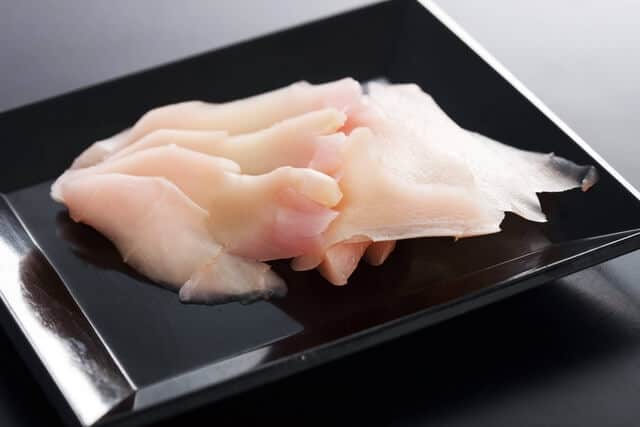Have you ever taken a bite of sushi and noticed that sweet, tangy ginger on the side? That’s Gari, one of the Yakumi in Japan—far more than just a garnish. It plays a key role in the sushi experience, both in taste and tradition. In this article, we’ll dive into what Gari is, trace its history, and introduce a Tokyo restaurant that treats it with the care it deserves.
What Makes Gari Special?

Sushi chefs carefully slice young ginger into thin pieces and pickle them in a blend of sweet vinegar. The result is Gari—crisp, refreshing, and slightly spicy. Each bite helps cleanse your palate, especially when switching between types of sushi. It balances out the richness of oily fish and prepares your taste buds for the next bite. Many diners believe Gari also supports digestion and helps prevent foodborne illness, making it a practical companion to raw seafood.
The name “Gari” itself is rooted in a direct sensory experience. The most widely accepted theory for its origin attributes it to the “gari-gari” sound produced when chewing larger pieces of ginger. Gari’s signature pink hue usually appears naturally when the anthocyanins in young ginger react with the vinegar. However, some commercially made varieties use food coloring to get that same look. The most flavorful Gari comes from seasonal young ginger, which has a milder heat and smoother texture than mature roots.
From Medicine to Mealtime

Gari’s roots stretch back centuries. During the Edo period (1603–1868), people began regularly eating pickled ginger alongside sushi. At the time, ginger held a strong reputation for its healing properties and its ability to combat bacteria—especially important in an era before refrigeration. The name “Gari” might come from the sound of chewing the crispy slices (“gari-gari”) or possibly from the sound of grating it.
Historical records like the Morisada Mankō (an 1837 encyclopedia of Edo customs) mention pickled ginger as a familiar food item. By then, Gari had already earned a place at the sushi counter, particularly in Eastern Japan. Meanwhile, in the Kansai region, pickled red ginger known as Beni Shoga gained more traction. These regional differences continue today.
Experience Gari the Traditional Way
Kanda Sasazushi (神田笹鮨)

In Tokyo, diners looking for a traditional Gari experience often head to Kanda Sasazushi (神田笹鮨). This long-standing Edo-style sushi restaurant first opened its doors in 1903. Over the decades, the chefs have continued to honor the small but essential details of their craft—including the preparation of Gari. They use fresh, seasonal young ginger to create a bright, aromatic, and perfectly balanced version.
Address: 2-8-5 Kajicho, Chiyoda-ku, Tokyo 101-0044, Japan
Phone: +81-3-3252-3344
Hours: Fri–Sun, Holidays: Lunch 11:00 AM–2:00 PM, Dinner 5:00 PM–9:30 PM Mon & Tues: Dinner 5:00 PM–9:30 PM
Website: https://sasazushi.com
Final Thoughts
Gari might seem simple at first glance, but it holds centuries of tradition and purpose in every slice. Whether it’s cleansing your palate, supporting digestion, or connecting you to culinary history, it deserves attention.
For those who enjoy Gari’s refreshing kick, try exploring other Japanese pickled treats like Umeboshi, Takuan, or Beni Shoga. Each offers its bold flavor and glimpse into Japan’s vibrant food culture. g a generous scoop of Beni Syoga. You’ll taste how this small but mighty condiment brings the entire dish to life. You should also read about Yakumi composed of all aromatic vegetables and spices in Japan.
Gari (がり / Pickled Ginger) FAQ
Gari is thinly sliced young ginger pickled in sweet vinegar. It is usually served with sushi.
It’s used as a palate cleanser between different types of sushi, so you can fully enjoy each flavor.
It has a refreshing, slightly sweet, and tangy flavor with a mild spiciness from ginger.
It’s eaten separately, not placed on top of sushi. Its purpose is to refresh your mouth between bites.
Naturally pickled young ginger turns light pink. In commercial versions, food coloring is sometimes added to achieve the pink color.
Yes, ginger aids digestion, boosts circulation, and has antibacterial properties—making it both tasty and beneficial.
Yes, Gari is generally vegan, since it’s made from ginger, vinegar, sugar, and salt.
Yes, Gari is sold in jars or packs at Japanese or Asian grocery stores worldwide.

 1 month ago
66
1 month ago
66










 English (US) ·
English (US) ·